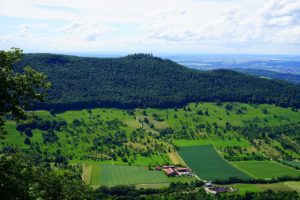
The baseline studies provide a wide range of maps and graphics depicting the location of crops with island-by-island summaries. It is a snapshot in time intended to help industry, government, and the community in making decisions that affect agricultural land use in the state.
The 2020 updated report and the 2015 report were completed under contracts with the University of Hawai`i at Hilo’s Spatial Data Analysis and Visualization Lab (SDAV) which used Geographic Information System technology and aerial imagery from several sources to digitally document the footprint of lands engaged in commercial-scale agriculture statewide. Both reports are available on the HDOA website at: https://hdoa.hawaii.gov/salubreports
“Our administration continues to focus on increasing local food production throughout the state,” said Gov. David Ige. “The events over the past year have made our entire community realize how critical our mission is to raise the level of our food security.”
“While the cumulative impacts of the COVID-19 pandemic on agriculture over the past year are not reflected in this report, it is encouraging to see that productive lands in agriculture were increasing over the past five years,” said Phyllis Shimabukuro-Geiser, chairperson of the Hawai`i Board of Agriculture. “The data is an indicator of growth through many diverse crops and it emphasizes the importance of preserving and protecting agricultural lands for future cultivation and improving the state’s economic growth.”
On O`ahu, highlights in the 2020 data show a total ag acreage of 41,310 acres, an increase of 493 acres (+1.2 percent) from the data in the 2015 study. However, crop acreage rose by 921 acres (+4.1 percent) and was mostly driven by diversified agriculture with an increase of 730 acres (+7.4 percent). Taro acreage also increased by 26 acres (+50 percent) and tropical fruit acreage increased by 33 acres (+15 percent) from 2015. The gains on O`ahu were offset by the loss of acreage in pasture lands which decreased by a total of about 430 acres, mainly due to the creation of a solar project on former cattle pasture lands in Waipio. The study also tallied the loss of 360 acres of diversified agricultural lands to a subdivision development alongside the H-2 Highway.
On Hawai`i Island, total agricultural acreage was 614,552, a drop of 891 acres (-0.14 percent) from 2015. During the past five years, the island has been challenged by natural disasters, including adverse weather and volcanic activity. In addition, island agriculture contended with invasive pests such as the coffee berry borer and spittlebug.
The 2018 eruption at Kilauea Volcano’s East Rift Zone covered about 1,000 acres of productive agricultural lands in Puna, which included diversified crops, horticulture, macadamia nut, papaya, and tropical fruit farms. Despite those losses, most of those crops gained acreage during the survey period with diversified crops gaining 1,076 acres (+33 percent), papaya gaining 640 acres (+25 percent), and tropical fruits gaining 167 acres (+5 percent). Acreage in dairy production dropped about 1,000 acres due to the closure of Big Island Dairy in 2019. The survey did note the first return of sugar cultivation to the island with 14 acres in Hawi that is part of a distillery operation.
Kaua`i posted total ag acreage of 65,538, gaining 2,294 acres (+3.6 percent) over 2015. Kauai crops in particular gained more than 1,880 acres (+8.8 percent) over 2015. Of that increase, more than 950 acres was attributed to seed production, and 816 acres attributed to commercial forestry operations. Banana, coffee, taro, and tropical fruits also gained acreage on the island. However, diversified crops lost 53 acres
(-4.4 percent) from 2015. Pasture lands continue to make up the majority of agricultural acreage (65 percent) on Kaua`i.